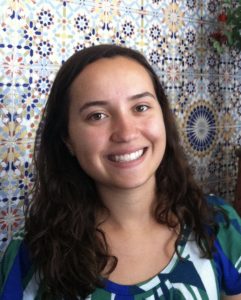 My name is Jessica Ferrall and I am a senior majoring in Psychology, with minors in Spanish and Business. I am broadly interested in cognitive neuroscience and I have previously worked on projects in the fields of neuroeconomics and concussions research. Through those experiences, I became fascinated by how the brain changes in different circumstances, such as after a traumatic brain injury, and how those changes relate to behavior. This semester, I have been given the wonderful opportunity to work with Dr. Martin Styner at the Neuro Image Research and Analysis Laboratories (NIRAL) in the Department of Psychiatry at UNC Medical School. This is the first time that I have been given the responsibility and independence to work on my own project, which is exciting but also a bit daunting.
My name is Jessica Ferrall and I am a senior majoring in Psychology, with minors in Spanish and Business. I am broadly interested in cognitive neuroscience and I have previously worked on projects in the fields of neuroeconomics and concussions research. Through those experiences, I became fascinated by how the brain changes in different circumstances, such as after a traumatic brain injury, and how those changes relate to behavior. This semester, I have been given the wonderful opportunity to work with Dr. Martin Styner at the Neuro Image Research and Analysis Laboratories (NIRAL) in the Department of Psychiatry at UNC Medical School. This is the first time that I have been given the responsibility and independence to work on my own project, which is exciting but also a bit daunting.
At NIRAL, I am mapping the arcuate nucleus in DTI scans of one and two-year olds, correlating the volume of the tract with performance on cognitive assessments of language. Interestingly, the size of this area of the brain varies considerably between the two cerebral hemispheres and among individuals, with some people completely lacking the tract on one side! The arcuate nucleus connects two language areas in the brain, so I think it will be very interesting to see if the amount of asymmetry between the hemispheres is related to early language skills. Before this internship, I had never even heard of the arcuate, so I initially felt a bit outside of my comfort zone in regards to the subject matter. However, I now feel that this project fits in perfectly with my interests in cognitive neuroscience, and I am learning a number of skills that will be useful in my future. For example, I am currently learning how to use a free DTI analysis software called SLICER which allows me to visualize white matter tracts. Throughout the course of the semester, I also plan to learn how to code cognitive assessments and run statistical analyses.
I have realized that neuroscience is a multidisciplinary field drawing from psychology, physics, computer science, and neurobiology. Many of the researchers at NIRAL have backgrounds in these various fields, which contributes to a diverse and innovative scientific atmosphere. In fact, my advisor, Dr. Styner, was trained as a computer scientist and is a professor in both the Computer Science and Psychiatry departments at UNC. I would not be able to complete my project without the help of a computer scientist who devised an algorithm to identify the arcuate nucleus in DTI scans. On the other hand, computer scientists also need feedback from neuroscientists on how to improve their programs for brain analyses, so the relationship is mutually beneficial. Although my internship has only just begun, I have already learned so much and I look forward to the rest of my Gil internship experience.
